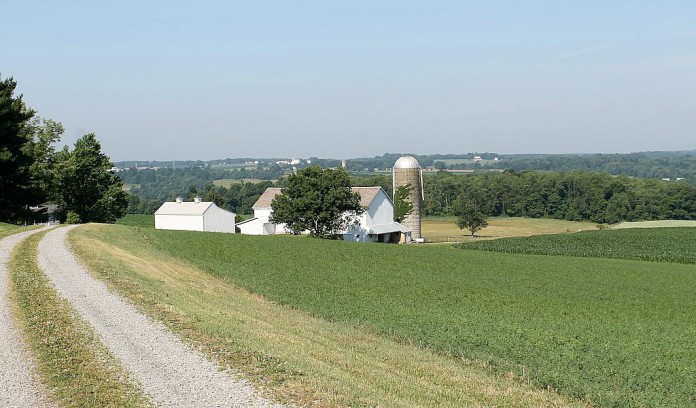I recently was selected by the Holmes Soil and Water Conservation board of supervisors to be the new program administrator. It wasn’t an hour later and the question was posed “What is one of your biggest challenges moving forward?”
It has been almost a month, and I have gone through many things large and small that will present challenges to conservation in the coming years, but I have settled on one, for today.
If you want to see the changing face of land use in rural areas of Ohio, look no further than the auction section of this paper, your social media or just about any regional publication. We all understand the need for transition of property from one owner/family/estate to the next, but it seems over and over we see smaller pieces, parcels, and tracts. I say this with caution since I sit in a glass house with plenty of stones. My house sits on two parcels formerly part of a larger farm, broken off in the 70s. I also understand you can make something with those stones or throw them around and destroy everything.
Making connections
Natural systems function best when interconnected. Large riparian corridors along a stream, vast wooded expanses of a state forest, or rolling grassy plains. Reality check: in our area this is not economically feasible or even practical, but there are ways to connect the smaller pieces and still come out with a better than average result.
When we evaluate proposed changes to each or any of these individual pieces, we need to consider the impacts to the overall area, neighborhood, watershed or region.
One step in conservation of these resources is to be mindful of the effect on whomever is literally or figuratively downstream. One small project in isolation from the rest can be successful but working with your neighbors can be a step towards this bigger picture.
Here is a great example: Ohio’s drainage laws are very open to interpretation, but I like to lean on an old saying “First do no harm.” If a solution can in fact help you AND not hurt your neighbor, that is a win. Can it also enhance the overall connectivity of a natural system? Win-win. Can this change also improve conservation by decreasing erosion and increasing water quality? Win-win-win.
The recent destruction by storms in our area has only served to reinforce the idea of community and neighbors helping neighbors. Some of this would not be possible or as obvious if there weren’t more of us sharing these rural areas.
Let’s work to do the same in conservation. Thinking about installing a grassed waterway? Can it connect with a neighboring property? Creating that riparian buffer along a stream. Talk to the farm next door and see if it could extend that much further. Putting some ground into the conservation reserve program? Maybe a group of properties go in together. As a group bigger things are possible.
Cost isn’t everything, but again let’s be real, it can be a limiting factor. There are many small projects, or bigger ones as a collaboration of many small, that can be less costly. Programs may exist to help offset some of those costs.
Never hesitate to reach out to your neighbors, or your local soil and water conservation district. You might find out you’re not the only one with the same idea and after all seeds grow better when they are planted together.













